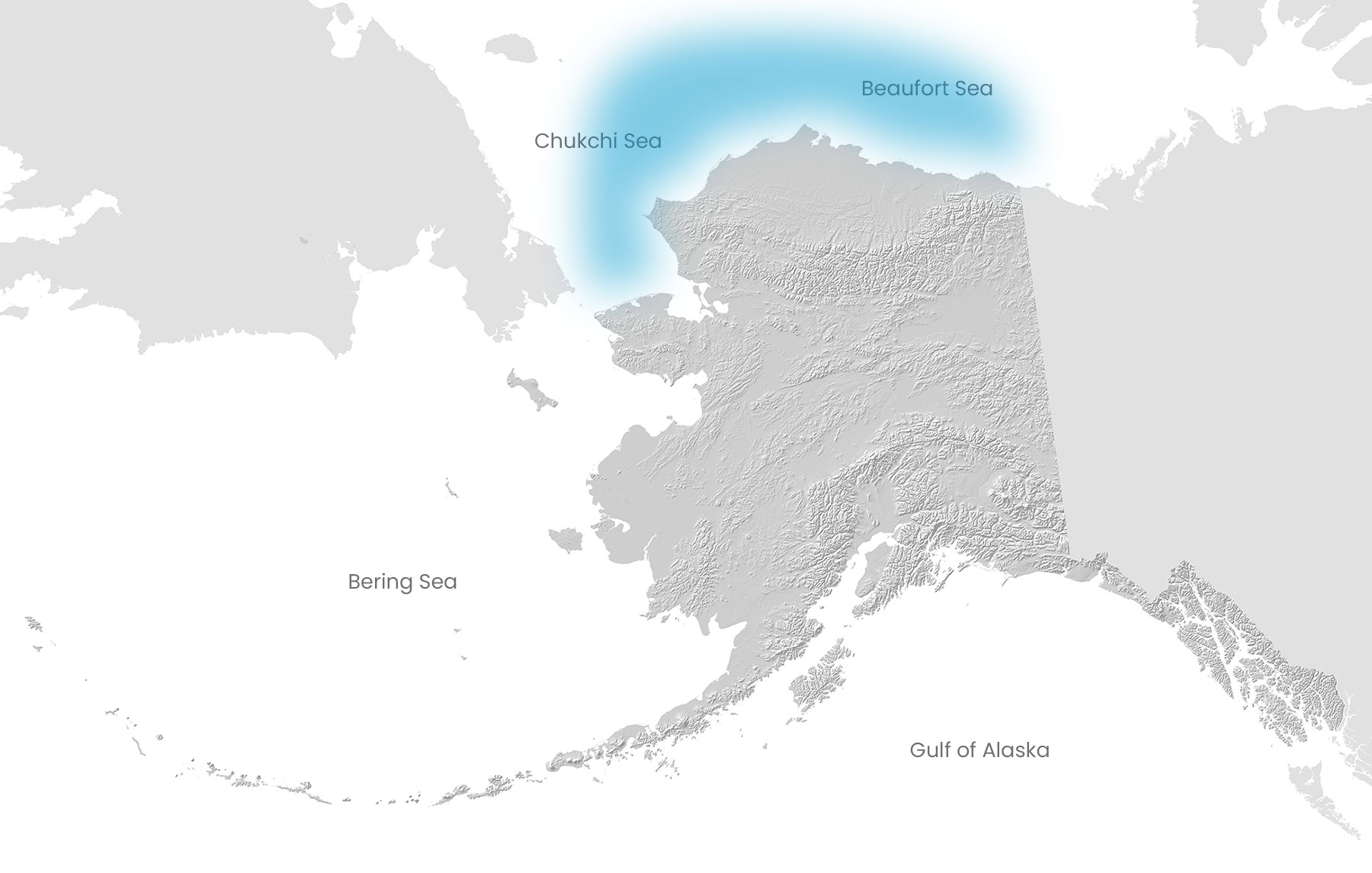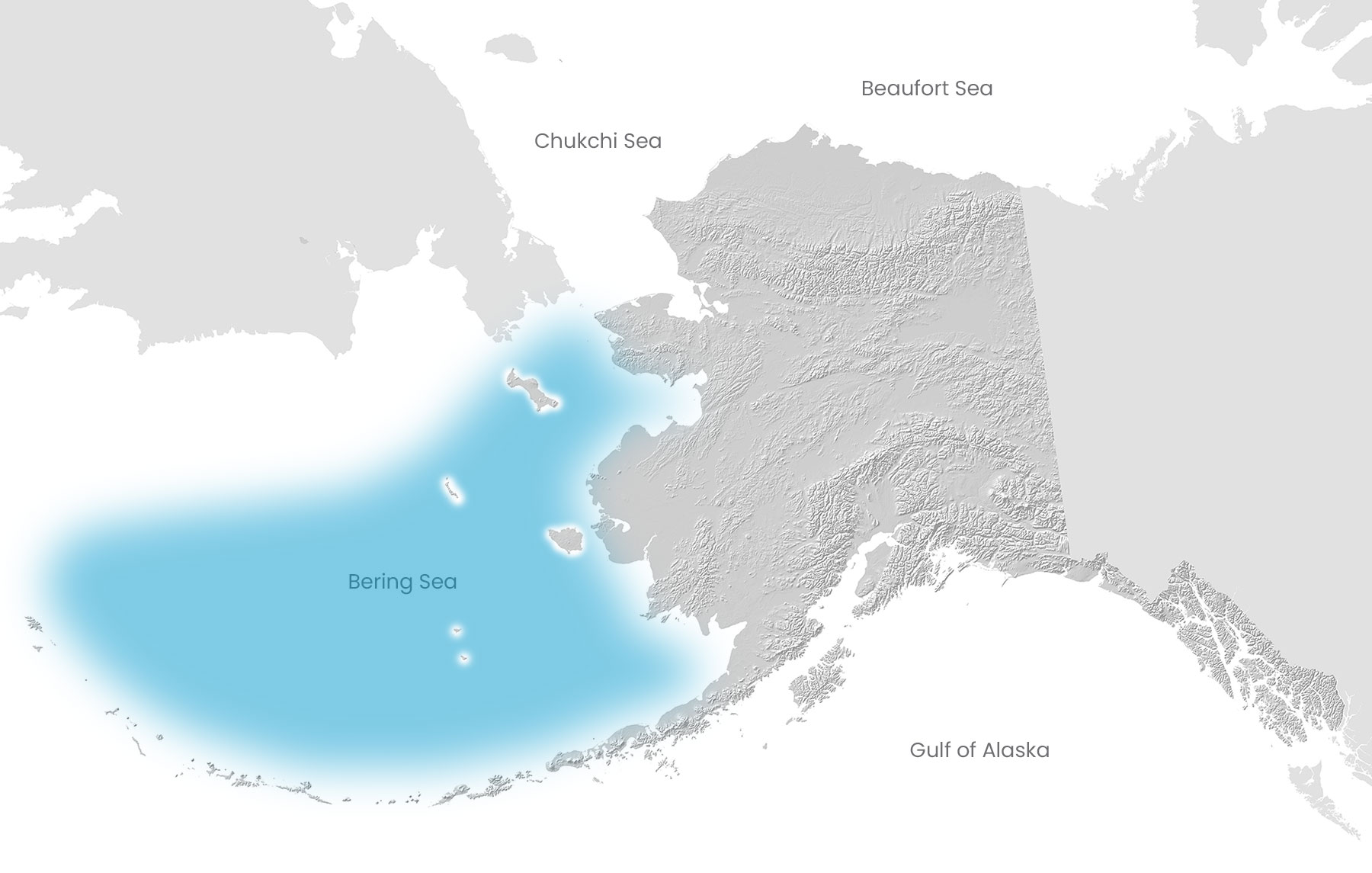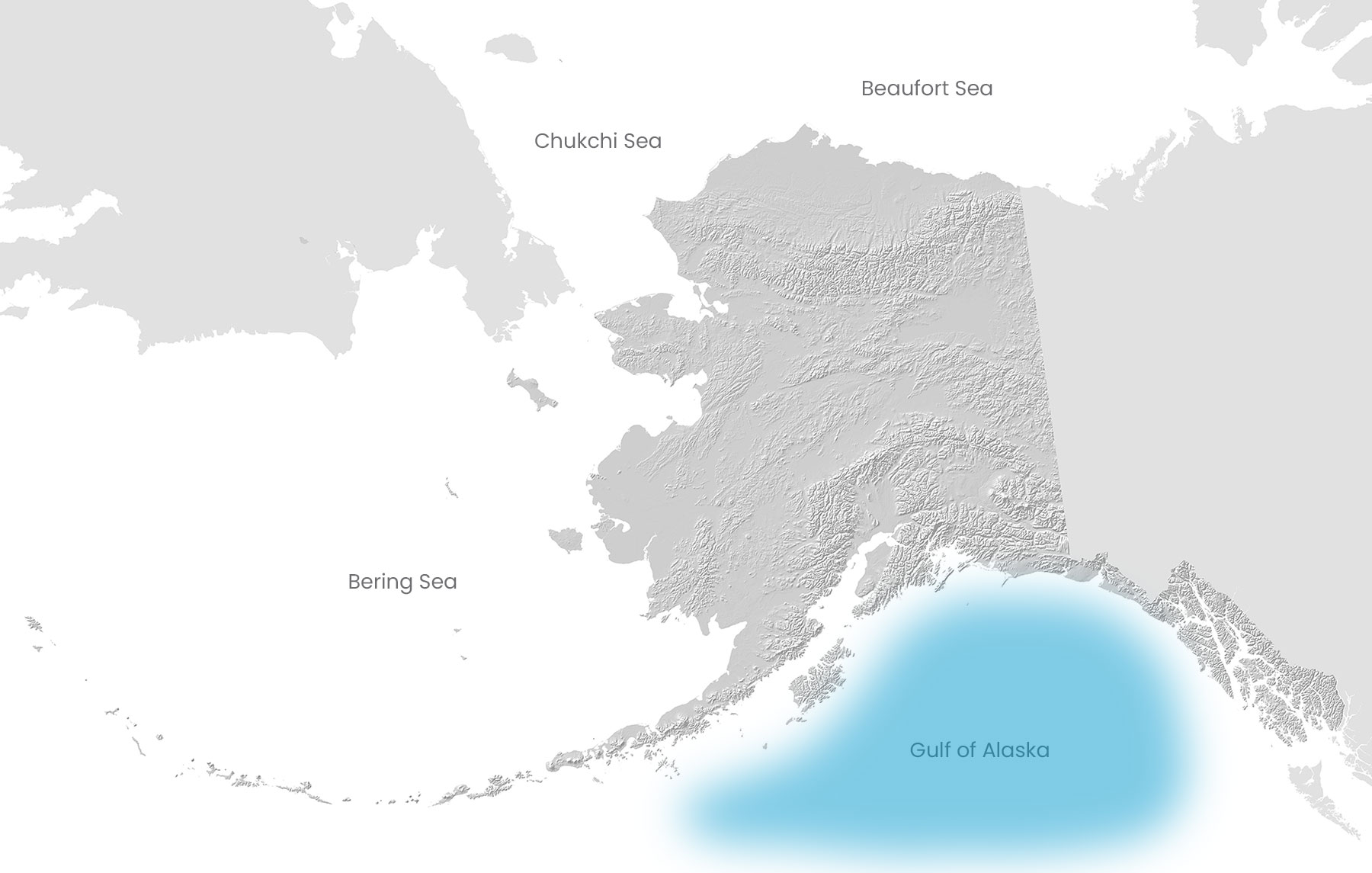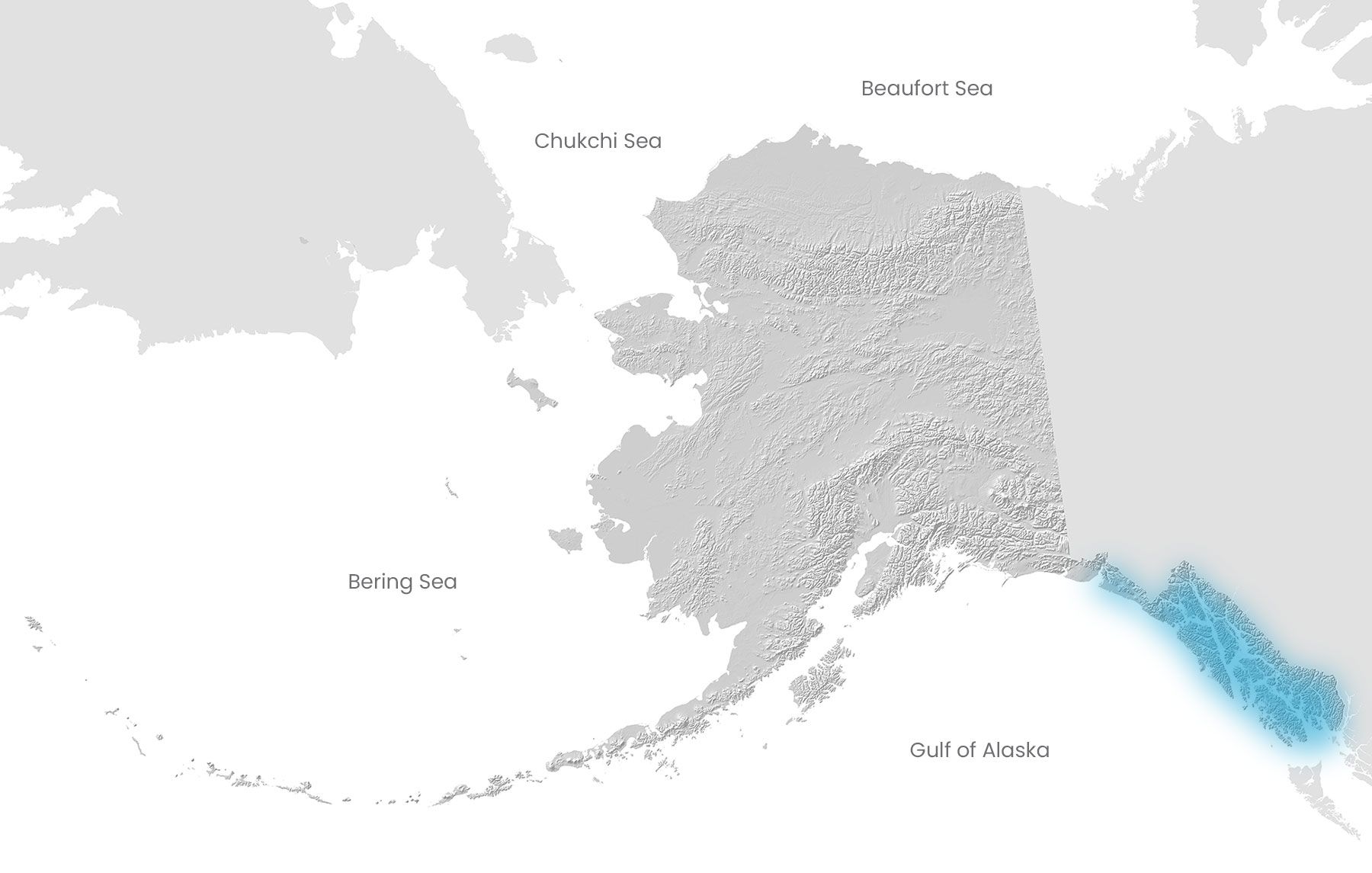Regional Conditions
Overview
Ocean acidification is a global process that is affecting Alaska more intensely than other places, primarily because of its cold water (cold water can absorb more gas, so Alaska waters are starting off with a high content of CO2 and more acidic water). Within Alaska, there is also variation in water chemistry throughout the state because of seasonal cycles and local influences. While a rise in CO2 concentrations due to human emissions is affecting all waters, natural factors in the foreground such as seasonal changes in freshwater inflow, temperature, ice cover and primary production can have a big impact on local variability. Using an analogy of a marching band, these local factors are the melodies that come and go throughout the song while the global signal is the overall volume of the band, increasing as it approaches.
Researchers are working to better understand conditions and trends in different parts of Alaska to identify hot spots, ranges of natural variability, and rates of change. The more we know, the better we will be able to prepare and adapt as our waters change.






